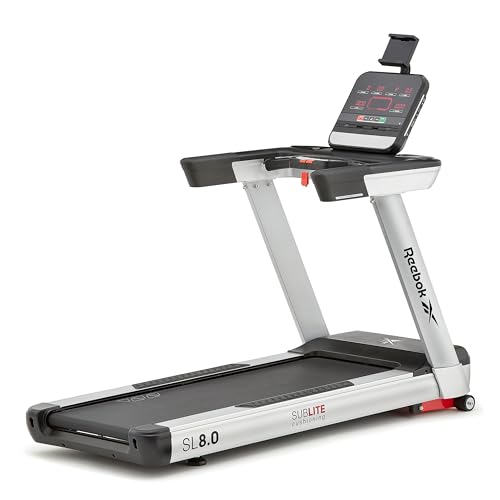The Rise of Non-Electric Treadmills in the UK: A Sustainable Approach to Home Fitness
Recently, the fitness market has seen a considerable shift towards sustainability and health-conscious way of lives. With the rise of eco-friendly products, non-electric treadmills have actually gotten substantial popularity among physical fitness enthusiasts and casual users alike. These treadmills use an unique mix of sustainability, performance, and affordability, making them an outstanding choice for those wanting to get fit without the hefty price of electricity-consuming machines. This post will explore the features, benefits, and choices offered in the UK market for non-electric treadmills.
Understanding Non-Electric Treadmills
Non-electric treadmills, in some cases referred to as manual or self-powered treadmills, run without a source of power. Instead, they rely exclusively on the user's movement to drive the treadmill belt. They can be a great addition to home fitness centers, specifically for those wanting to avoid high electricity costs or seeking to minimize their carbon footprint.
Types of Non-Electric Treadmills
There are several types of non-electric treadmills available in the market. Here's a succinct table that breaks down the primary types you may experience:
| Type | Description | Pros | Cons |
|---|---|---|---|
| Wood Treadmills | Made from high-quality wood, providing a traditional visual. | Resilient, visual appeal | Much heavier and can be more expensive |
| Steel Treadmills | Strong and robust, typically made from steel or strong metals. | Lasting, steady | Much heavier, might have a greater carbon footprint |
| Foldable Treadmills | Easy to save and transfer, often with a light-weight frame. | Space-saving, portable | May compromise on stability and toughness |
| Incline Treadmills | Deals integrated in incline functions for included strength. | Great for different workouts | Typically heavier and costlier |
Key Features of Non-Electric Treadmills
- User-Powered Movement: The most distinct function is that they are powered directly by the user, providing a natural running simulation.
- Adjustable Incline: Many designs enable users to alter the incline by hand, providing a more challenging workout.
- Space Efficiency: Treadmills can be created to fold or compact quickly for storage, suiting homes with limited area.
- Sturdiness: Non-electric treadmills are usually built from robust products, assuring a long life expectancy with regular usage.
Advantages of Non-Electric Treadmills
Non-electric treadmills come with various benefits that make them an appealing choice:
- Cost-Effective: By removing the requirement for an electrical outlet, users can save money on electricity bills and utilize their makers anywhere.
- Sustainable Workout: These treadmills symbolize a greener approach to fitness, adding to a lower ecological impact.
- Natural Running Mechanics: The manual element engages core muscles better and helps improve versatility and stability.
- Lower Maintenance Costs: Being mechanical, there is less that can fail compared to their electric counterparts, leading to lowered upkeep needs.
Elements to Consider When Choosing a Non-Electric Treadmill
While choosing a non-electric treadmill, a prospective purchaser should think about several factors:
- Weight Capacity: Ensure that the treadmill can accommodate the user's weight.
- Runner's Comfort: Look for functions like adjustable belt resistance and cushioning to enhance convenience.
- Portability: If area is an issue, choose a model that can be easily folded or transferred.
- Price Range: Establish a budget as rates can vary extensively based on products and functions.
Popular Models in the UK
The UK market provides a series of non-electric treadmills with numerous functions and price points. Here are some well-regarded options:
| Model | Price Range | Key Features | User Ratings |
|---|---|---|---|
| Physical Fitness Reality TR3000i | ₤ 300 - ₤ 450 | High weight capability, foldable, and manual incline | 4.5/ 5 |
| Kettler Track S | ₤ 400 - ₤ 600 | Adjustable incline, compact style | 4.6/ 5 |
| Smarter Fitness SMA7 in the house | ₤ 250 - ₤ 400 | Made from wood, aesthetic style, extremely sturdy | 4.4/ 5 |
| ProForm Performance 400i | ₤ 300 - ₤ 500 | User-friendly interface, excellent build quality | 4.3/ 5 |
Frequently Asked Questions (FAQ)
Q1: Can I get a great workout on a non-electric treadmill?
A1: Yes! Non-electric treadmills engage your muscles more than electric designs due to their manual nature, offering an exceptional cardiovascular exercise.
Q2: Are non-electric treadmills more budget-friendly than electric ones?
A2: Generally, they are more affordable given that they do not depend on electrical performance, triggering less upkeep and operation costs.
Q3: How do I maintain a non-electric treadmill?
A3: Maintenance is basic. Keep the treadmill clean, lube the belt if necessary, and periodically look for any loose bolts or parts.
Q4: What is the weight limit for non-electric treadmills?
A4: Most models support a weight variety in between 100kg and 180kg. It is a good idea to examine specific requirements.
Q5: Is working on a non-electric treadmill harder than on an electric one?
A5: It can be, as users must create all movement. However, this can result in better endurance and muscle engagement gradually.
As the UK turns its focus towards sustainable living and much healthier lifestyles, non-electric treadmills offer a testimony to this altering landscape. With their affordability and eco-friendly leanings, these makers represent a substantial shift in how individuals see fitness in your home. By thinking about Manual Treadmill Uk and necessary aspects outlined in this article, fitness enthusiasts can make educated choices that cater not only to their physical fitness needs however likewise to their ecological suitables.
Whether it's for casual walking or extreme running, purchasing a non-electric treadmill can be an action towards a much healthier and more sustainable way of life.

